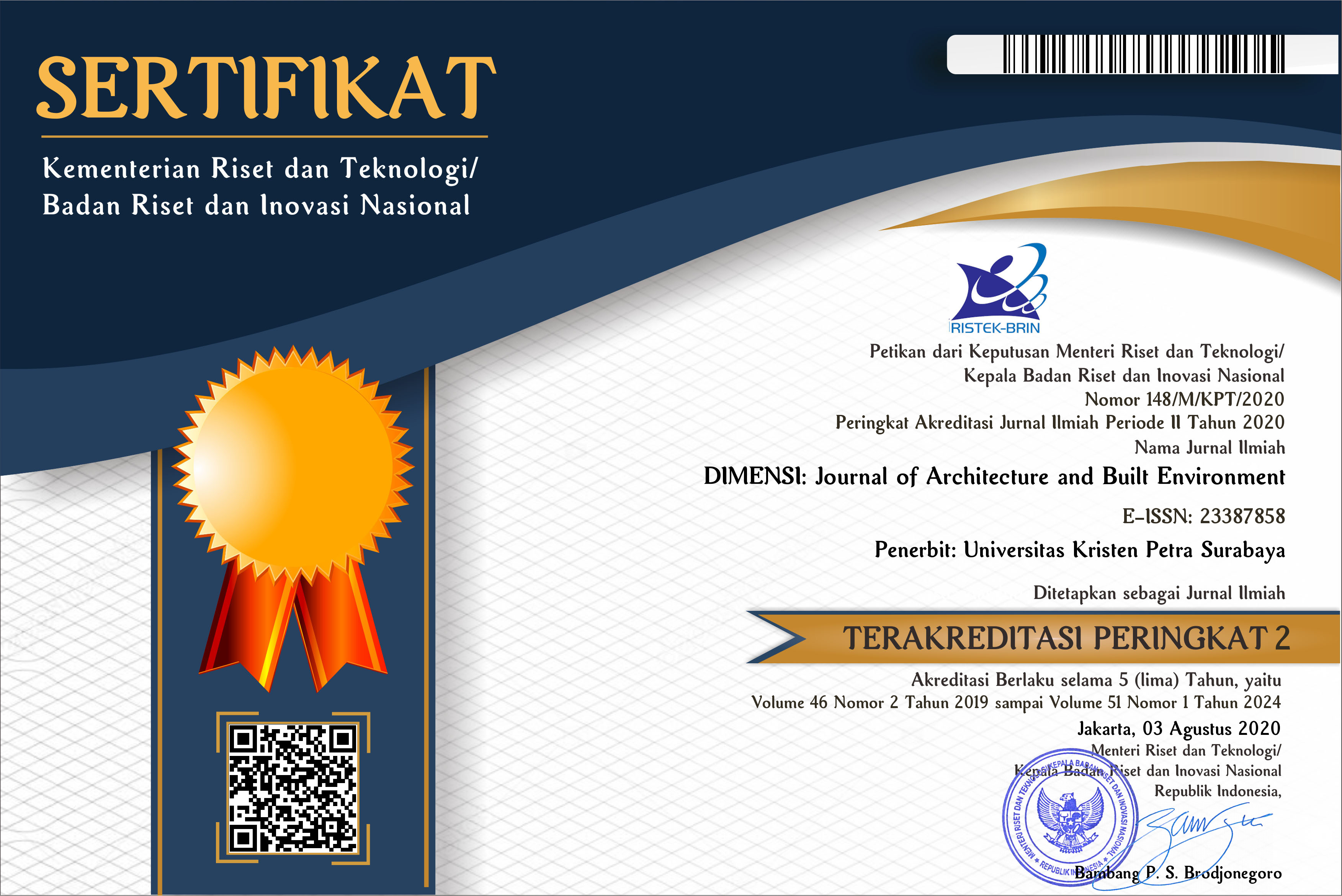GLASS AND PERFORATED METAL DOUBLE SKIN FAÇADE PERFORMANCE IN HOT HUMID CLIMATE
 :
:
https://doi.org/10.9744/dimensi.44.2.143-148
Keywords:
Double skin façade, perforated metal, building performance.Abstract
The construction of a sustainable building in Indonesia has increased in recent years. Middle- to high-rise buildings are encouraged to enhance its performance to reduce energy demands. With maximum temperature 34°C, most of the buildings in Indonesia utilize mechanical air conditioning to achieve indoor thermal comfort. In this research, the performance of campus building with Double Skin Façade (DSF) in Indonesia would be quantitatively assessed and simulated by utilizing Autodesk Revit and Green Building Studio. In respect to façade material, actual cavity width, inner and outer layer façade type, and also weather condition, these simulations are expected to produce comparison result between four DSF material configurations which are perforated metal, single glazing, double glazing, and triple glazing. From the simulation, the results show that perforated metal DSF could consume 5%-23.16% more energy for space cooling compared to building with glass DSF.
Downloads
References
Blanco, J. M., Arriaga, P., Roji, E. & Cuadro, J. (2014). Investigating the thermal behavior of double-skin perforated sheet façades: Part A: Model characterization and validation procedure. Building and Environment, 82, pp.50-62.
Chan, A. L. S., Chow, T. T., Fong, K. F. & Lin, Z. (2009). Investigation on the energy performance of double skin façade in Hong Kong. Energy and Buildings, 41, pp.1135-1142.
Dewi, C. P., Huang, R.-Y. & Nugroho, A. M. (2014). Strategi Double Skin Fasade pada Bangunan Kampus National Central University dalam Menurunkan Kebutuhan Energi Pendinginan. Jurnal Ruas, 11, pp. 51-59.
Haase, M., Marques da Silva, F. & Amato, A. (2009). Simulation of ventilated facades in hot and humid climates. Energy and Buildings, 41, pp.361-373.
Iyati, W., Wonorahardjo, S. & Indraprastha, A. (2014). Natural airflow performance of double-skin facade types. Architecture and Built Environment, pp.41.
Maps, G. 2015. Universitas Multimedia Nusantara.
Mulyadi, R. (2012). Study on naturally ventilated double-skin facade in hot and humid climate. Doctor of Engineering, Nagoya University.
Saelens, D. & Hens, H. (2001). Experimental evaluation of airflow in naturally ventilated active envelopes. Journal of Building Physics, 25, pp.101-127.
Wong, P. C., Prasad, D. & Behnia, M. (2008). A new type of double-skin façade configuration for the hot and humid climate. Energy and Buildings, 40, pp.1941-1945.
Downloads
Published
How to Cite
Issue
Section
License
Authors who publish with this journal agree to the following terms:
- Authors retain copyright and grant the journal right of first publication with the work simultaneously licensed under a Creative Commons Attribution License that allows others to share the work with an acknowledgement of the work's authorship and initial publication in this journal.
- Authors are able to enter into separate, additional contractual arrangements for the non-exclusive distribution of the journal's published version of the work (e.g., post it to an institutional repository or publish it in a book), with an acknowledgement of its initial publication in this journal.
- Authors are permitted and encouraged to post their work online (e.g., in institutional repositories or on their website) prior to and during the submission process, as it can lead to productive exchanges, as well as earlier and greater citation of published work (See The Effect of Open Access).


















